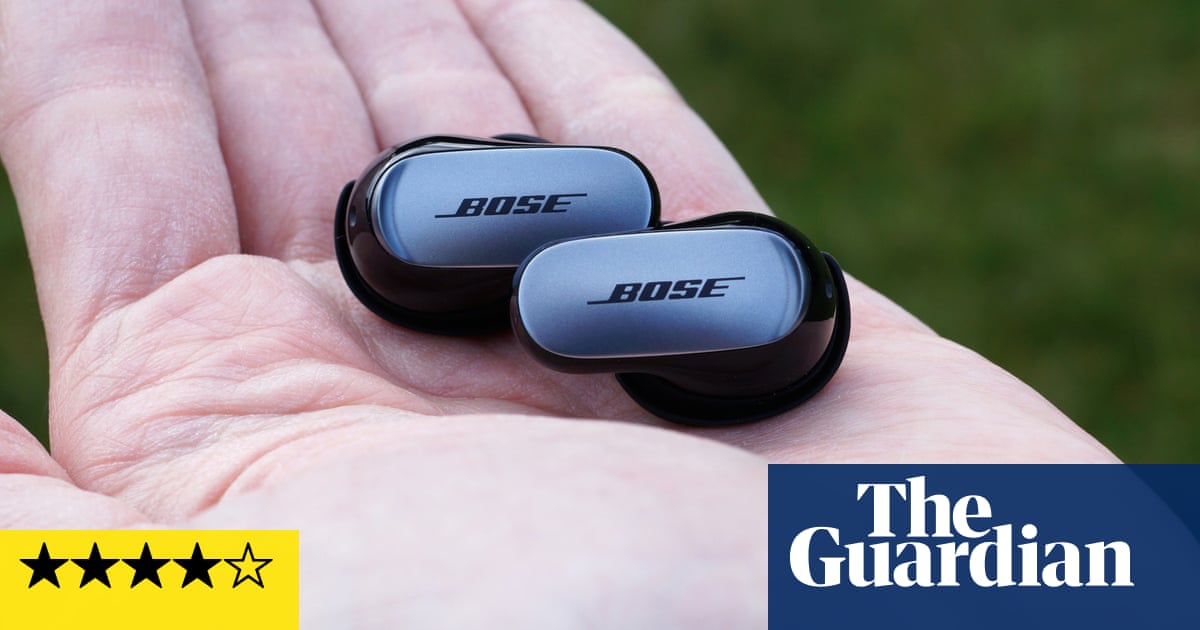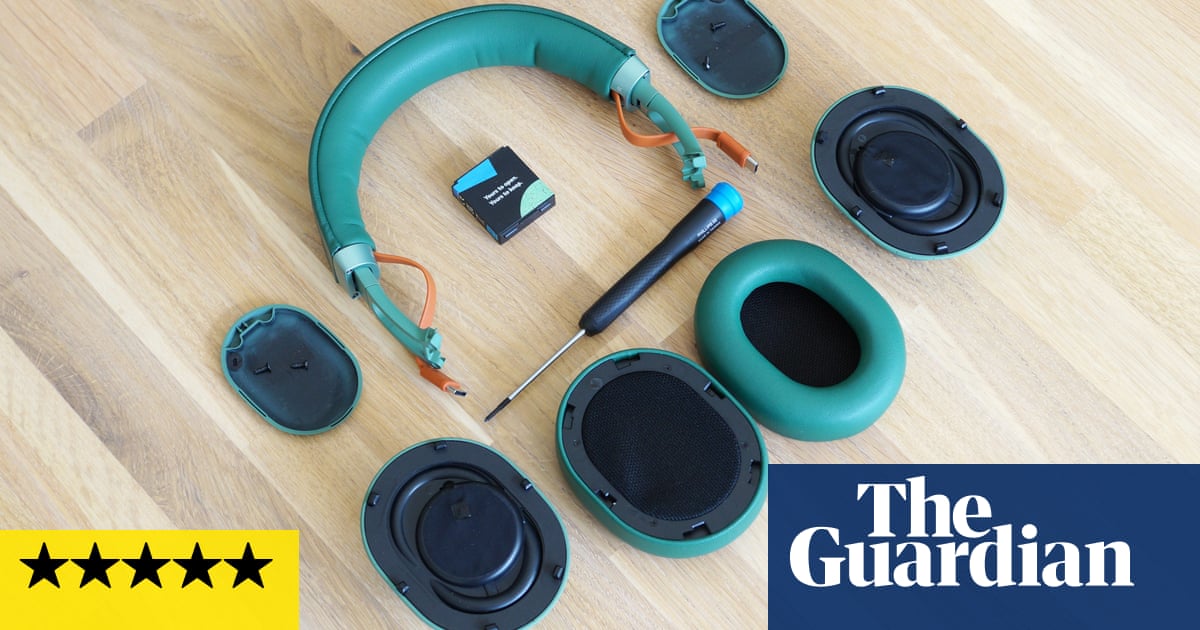
Bose is back with its most-effective noise cancelling earbuds yet – a massive upgrade that are smaller, sound better and could knock Sony off the top spot.
The QuietComfort Earbuds II cost £280 ($279/A$430) and are at the top end of the market, competing directly with the likes of Apple’s AirPods Pro and Sony’s WF-1000XM4.
The new earbuds are 30% smaller, a lot lighter and more discreet than their predecessors. They have short, flat stalks that stick down towards your mouth, which make them look a little like old-school Bluetooth headsets.
They are very comfortable and stable in the ear, come with three sizes of silicone ear tips and three sizes of stabilising wings that can be mixed and matched to get the right fit. The Bose Music app can run a fit test to make sure you’ve got a good seal in your ear.
Each stalk is touch-sensitive for playback, noise cancelling and swipe volume controls, which work well. Remove a bud and the music pauses and switches into transparency mode.
The earbuds last for about six hours of playback and magnetically clip into a flip-top case. The case can fully recharge the earbuds three times. It is much smaller and easier to pocket than its predecessor, but is still 50% larger than the best on the market.
Specifications
Water resistance: sweat resistant (IPX4)
Connectivity: Bluetooth 5.3, SBC, AAC
Battery life: 6 hours (up to 24 hours with case)
Earbud dimensions: 17.2 x 30.5 x 22.4mm
Earbud weight: 6.24g each
Charging case dimensions: 59.4 x 66.3 x 26.7mm
Charging case weight: 59.8g
Case charging: USB-C
Top-class noise cancelling
The earbuds calibrate their sound and noise cancelling for your ears each time you turn them on, playing a short violin strum tone when you insert them, using microphones to gauge the shape of your ear canal.
It is hard to know if this makes a material difference because you can’t turn it off, but the earbuds definitely sound better than their predecessors and have the most effective in-ear noise cancelling I’ve tested.
They dramatically reduce all the usual deep rumbles, hums and roars that rivals manage, but they also do a much better job at reducing the mid and high tones that are the most difficult for active noise cancelling to handle. Conversations, keyboard clicks and other higher tones are masked much more effectively, performing almost as well as the best, big over-ear noise cancelling headphones. They handle wind noise very well, too, which can’t be said for all their competitors.
The noise-cancelling level can be customised using different user-configurable modes from maximum blocking to full awareness. The transparency mode is also very good and has a feature similar to the recent AirPods Pro 2 that reduces sudden and very loud noises automatically, stopping you being overwhelmed by the screech of train wheels, for instance.
Loads of bass
The audio quality is also improved. It retains Bose’s trademark clear and controlled sound, which can come across a little clinical in some more raw genres, but generally they do a good job with a wide range of music styles.
They are very bass-heavy at default settings which is almost too much sometimes. A quick adjustment on the equaliser in the Bose Music app to turn it down a smidgen made them a bit more balanced. Otherwise they have good detail in the mids with slightly softened high notes, making them great easy-listening earbuds. They don’t sound quite as good as the best from Sony or Sennheiser, though.
Call quality is good with my voice coming across loud and clear in quiet environments and still audible out on the street with only a faint bit of background noise leaking through in very loud places.
The earbuds support standard Bluetooth 5.3 with the universal SBC and AAC audio formats. In use with various phones, tablets and computers, the earbuds generally had a strong and stable connection, even in difficult environments such as train stations, but occasionally skipped when unlocking a phone.
The Bose buds only connect to one device at a time, but can switch between up to six paired devices. Only the right earbud can be used on its own for calls.
Sustainability
Bose estimates that the batteries will last in excess of 500 full charge cycles but they are not replaceable and the earbuds are not currently repairable, ultimately making them disposable.
Some replacement parts including ear tips (£15) and a charging case (£90) are available. The earbuds do not contain recycled materials. Bose offers discounts for returning broken products. It does not publish individual product environmental impact reports but does publish annual sustainability reports.
Price
The Bose QuietComfort Earbuds II cost £279.95 ($279/A$429.95) and are available in black or white.
For comparison, the Sony WF-1000XM4 cost £159, the Sennheiser Momentum True Wireless 3 cost £220, the Google Pixel Buds Pro cost £179, the Beats Fit Pro cost £220, Apple AirPods Pro 2 cost £249 and the Nothing Ear (1) cost £149.
Verdict
The second iteration of Bose’s QuietComfort Earbuds are a big upgrade across the board on their predecessors.
They are smaller, lighter, more discreet and easier to fit and carry about. They have good controls, solid battery life and are stable and comfortable to wear for extended periods. They sound better with good, easy-listening audio and plenty of bass, though they still have Bose’s signature “clean” sound which can’t match the sonic highs of the very best available.
The most impressive bit is the noise cancelling: they set a new benchmark, reducing more unwanted noise than any other earbuds, including the troublesome higher ranges such as voices.
They are pricey compared with rivals, so shop around. Despite having spare parts available, they can’t be repaired and the battery can’t be replaced, ultimately making them disposable and losing a star.
Pros: class-leading adjustable noise cancelling, solid battery life, decent case, good sound, customisable and comfortable, sweat resistance, good controls, decent call quality.
Cons: expensive, only SBC and AAC not higher quality audio formats, no multipoint connectivity, only right earbud can be used on its own.












